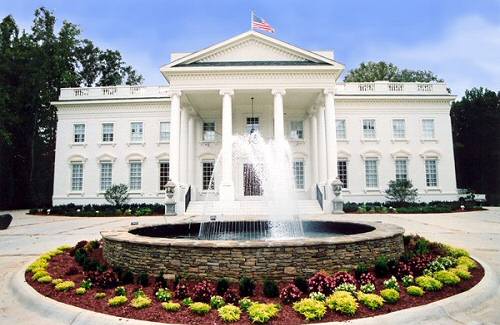 I have recently been working with a team, implementing workplace transformation at a mid-size organization. “Workplace transformation” is an integrated approach to people, process, and place that blends industry leading practices with new, innovative approaches to facility design, construction, and management. As the team has progressed through this initiative, we have learned to quickly adapt to new scenarios and try out new ideas and methods in order to successfully execute the project.
I have recently been working with a team, implementing workplace transformation at a mid-size organization. “Workplace transformation” is an integrated approach to people, process, and place that blends industry leading practices with new, innovative approaches to facility design, construction, and management. As the team has progressed through this initiative, we have learned to quickly adapt to new scenarios and try out new ideas and methods in order to successfully execute the project.
...driving transformation
It has been more than fifteen years since the move into a new headquarters building. The space was state-of-the-art; approximately 400k square feet in a prime downtown location. Today, the furniture and fixtures are in dire need of a refresh; and the space has grown more and more inefficient as the organization grows and the need for space changes. These inadequacies in the physical space impact the morale and productivity of the persons working and visiting the building. Senior leadership decided to tackle this issue by rethinking the current operating model and injecting innovation in the way that space is used. This sparked an enterprise initiative for workplace transformation. A key component of the initiative roll-out was a pilot project that included the partial renovation of the headquarters building.
Traditional facility upgrades consider departmental headcount multiplied by a square foot figure, typically in the range of 200-300 square feet per person. The improvements tend to look similar to the previous space only with new furniture and finishes. This new approach was different. The team began by asking the occupants, “HOW do you work?” and subsequently designed a space that fit those specific needs. By aligning the space with the business processes and increasing both internal and external mobility, the implementation team was able to significantly reduce space needs, thus decreasing overall occupancy costs. In addition, they leveraged advances in technology, as well as new and emerging human capital policies in order to implement new workplace strategies.
... learning lessons and getting better
While the workplace transformation initiative is relatively young, the team has recognized three key lessons that helped to navigate the process, reach milestones, and meet goals.
1. Don’t do it alone.
Typically, a corporate initiative is assigned to a team that takes on the sole responsibility for planning and implementation, often within a contained environment. Our first success came with the realization that we could not do it alone, and that we needed to expand the team concept. We started by identifying critical roles then matched our needs with internal and external resources. This composite gave the team insights and expertise from several perspectives, which has helped us avoid many of the pitfalls that tend to sidetrack similar projects. For example:
- Members from our internal management team were able to craft a vision that defined our parameters and helped the team stay on message.
- Our facilities group provided insights into the impacted program operations and the existing physical space that has created situational awareness.
- The architects conceptualized a design that brought together the components into a visually aesthetic, highly functional design with a flexible layout.
- Change management team members were able to rationalize our design concepts and introduce the human element into the equation, improving our likelihood of success by increasing adoptability of our initiative.
- Our technical experts take the goals and objectives from leadership, and analyze our plans and concepts, in order to formulate a business case that rationalizes a set of preferred alternatives. This diligent effort will help ensure that our decisions are based on sound logic and make good business sense from a financial perspective.
We also have significantly involved the senior leadership in this effort; to the extent that C-level offices and divisions are taking part in the initial phase. Their vision has guided the team’s direction, and their hands-on involvement has grounded our perspective, helping the team focus on realistic goals and set obtainable milestones.
2. Communicate, communicate, communicate
We can’t say this enough. Start early and communicate often with as many stakeholders as you can. It can be painful at times, especially early in the process, when plans are still being formulated. There is a natural tendency to hold back until the core message has been solidified and approved by upper management. However, in the absence of feedback from other stakeholders, the message can suffer from lack of clarity and myopia.
In order to mitigate the risks of communicating a message too early, our team worked with senior leadership to build a simple, straight-forward message. We then built onto this core message in phases, recruiting feedback from focus groups of trusted stakeholders, represented by the impacted programs and support functions.
We continue to actively communicate our message to various audiences within the organization, as well as with external stakeholders. We invited the participation of future occupants of the workspaces to voice their visions, and have been pleasantly surprised by the candid outlook and the willingness to embrace change. Our grassroots style of communication has proven effective in generating buy-in from the greater community, and has helped our team to be successful in rolling out the implementation.
3. It’s an evolution, not a revolution
Workplace Transformation is an evolutionary process, with each generation benefiting from learning opportunities and feedback during planning and implementation. GenOne of workplace transformation involves a smaller renovation project, merging an improved workplace with organizational goals and mandates. This project is integrating technology with the workplace, thus increasing collaboration and workforce flexibility. The lessons learned from this effort will be rolled into the planning for on-going phasing of the initiative.
Early in the process, our team recognized that this effort would take time to impact the larger organization, and that space needs would continue to be an issue throughout the implementation of workplace transformation. In response, we developed an integrated approach that meet the need for space capacity while aligning with plans for the future and efficiently managing resources. Using innovative space layouts designed for collaboration, the facilities team works with business units to increase capacity and meet configuration needs; utilizing freestanding furniture and optimizing existing infrastructure. Our proactive approach to supporting interim needs, while introducing new concepts, has enhanced the implementation team’s credibility; thereby helping promote the roll-out of the larger workplace transformation initiative.
... and finally
Workplace transformation is a continuous improvement initiative. By embracing change proactively, an organization can use workplace transformation to emerge stronger and more nimble; better able to address challenges in the competitive marketplace.
 In a memo release on May 11, 2012, the President reinforced the policies laid out by Executive Order 13589 (November 9, 2011) and the June 10, 2010 Real Estate related Memorandum on disposing of unneeded Federal real estate, targeting $3B in cost savings by the end of FY2012. In essence, this latest directive provides insight into the expected outcomes of budget planning. It focuses on four areas for cost savings, including:
In a memo release on May 11, 2012, the President reinforced the policies laid out by Executive Order 13589 (November 9, 2011) and the June 10, 2010 Real Estate related Memorandum on disposing of unneeded Federal real estate, targeting $3B in cost savings by the end of FY2012. In essence, this latest directive provides insight into the expected outcomes of budget planning. It focuses on four areas for cost savings, including:
